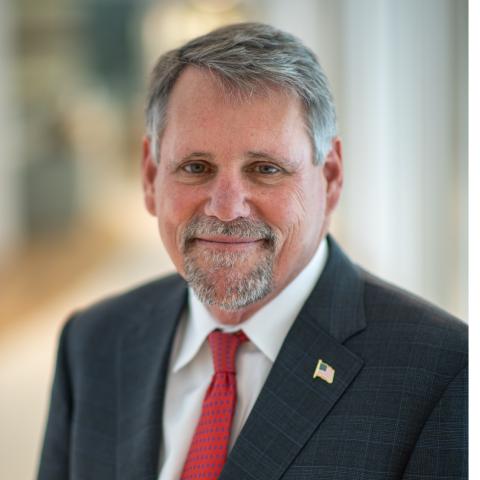New Delhi and Washington are closer today than they have ever been, but there is a lot more Delhi needs to do to ensure that this becomes truly the defining partnership of the 21st century.
The first official meeting between President Barack Obama with Indian Prime Minister Narendra Modi in September 2014 was marked by high expectations. Washington pinned high hopes on a strategic partnership with India along with the prospect of large contracts for US corporations. New Delhi expected an opening of the spigot of foreign investment and closer ties.
One year later, both sides are still waiting.
After years of policy paralysis in New Delhi, Modi’s Gujarat legacy and election campaign produced expectations of an emergent India. Tokyo, London and Washington, envisaged immediate change in New Delhi on foreign and economic policy issues.
Starting off as a postcolonial country that sought independent decision-making and self-sufficiency in economy and defense, nonalignment was the mantra in New Delhi for decades. India’s leaders never properly grasped the importance of economic policy to foreign and security policy. While tremendous time and money was invested in economic planning from the 1950s through the 1980s, India’s economic growth stayed at a low rate of around 3%, referred to derisively as the ‘Hindu rate of growth’ by economist Raj Krishna. Economic autarky was championed, but policies to encourage economic growth were not adopted.
In the aftermath of the end of the Cold War India was forced to undertake changes. Economic reforms started in the mid-1980s culminated in the process of liberalization in 1991. The next two decades saw the fruits of these reforms with economic growth going up to almost 10%.
The collapse of the Soviet Union and changing geopolitics also led to a change in India’s foreign policy, especially in its ties with the United States. For two countries that have never been allies, the growth in strategic cooperation has been exponential.
Since 2009 India and the US have held annual strategic dialogues. After President Obama’s visit to India in January the two sides elevated this dialogue to the Strategic and Commercial Dialogue.
The inaugural US-India Strategic and Commercial Dialogue was held in Washington, DC on September 22. Secretary of State John Kerry and Commerce Secretary Penny Pritzker held discussions with India’s External Affairs Minister Sushma Swaraj and Minister of State for Commerce and Industry Nirmala Sitharaman.
The joint statement released after the dialogue referred to the India-US partnership as ‘a significant contributor’ to peace, stability and prosperity in the Indian Ocean and Asia-Pacific regions and around the globe. India and the US consult each other not only on South Asia (for example, Afghanistan) but there is even an India-US Africa dialogue. The two countries also cooperate in instances where their citizens are caught in crises situations. For example, India helped rescue American citizens in Yemen and the two countries worked together after the Nepal earthquake.
In September New Delhi and Washington announced a Diplomacy Partnership that includes a Policy Planning Dialogue and also coordination on training of diplomats between the State Department and India’s ministry of external affairs. For an inclusive Indian foreign policy establishment that has traditionally resisted external influence this is a first.
According to the joint statement released after the Strategic and Commercial Dialogue, India and the US agreed to ‘work together to promote the responsible management and rules-based resolution of conflicts in shared maritime and space domains, and cyberspace.’ This reflects the vision of similar global security architecture.
Cooperation in the defense arena has deepened tremendously in the last decade. In June India and the US renewed the 10-year Defense Framework Agreement. Under the rubric of the Defense Technology and Trade Initiative the two nations are cooperating on pathfinder projects, for example the Working Groups on Aircraft Carrier Technology and Jet Engine.
In the economic arena the Strategic and Commercial Dialogue spoke of the need for cooperation in ‘improving India’s business climate, smart cities and infrastructure financing, supply-chain integration, aerospace and defense, and renewable energy.’ The aim is to push the current US-India annual bilateral trade of $100 billion to $500 billion.
While American corporations are eager to increase investment in the Indian market, there are still some challenges. For defense corporations the convoluted and cumbersome Indian procurement process combined with the restrictions imposed by ‘Make in India.’ For other corporates, their hopes for changes in tax laws, labor regulations and land acquisition are yet to be fulfilled.
Mr Modi has sought to change the style and structure of India’s foreign policy whether with India’s neighbors or critical countries like the United States. In his travels to almost 30 countries since he took over as prime minister in May 2014, Modi has crafted his message according to the country he visits.
With the United States, he has chosen to appeal to the large Indian Diaspora and build a personal rapport with President Obama. New Delhi seeks investment by American companies as well as sharing of critical technologies.
Every Indian prime minister has had a prerogative on defining foreign and security policy, primarily due to the legacy left by India’s first prime minister and foreign minister Jawaharlal Nehru. Thanks to his strong foreign and security policy team of top officials Mr Modi has achieved a number of his foreign policy goals.
In the strategic arena with a greater role for government agencies, dialogues are critical as they lead to vertical and horizontal integration of these two bureaucracies that traditionally had little knowledge of each other. Thus, the arenas where both sides can list deliverables are defense, cyber and space as well as cooperation in global crises.
In the economic arena closer and deeper ties between corporates and non government agencies are critical to the relationship. This is where the deliverables are few and far between. A paternalistic State that rests on rules and believes at its heart that the market is not to be trusted finds it difficult to be at ease with economic reforms.
Americans are disappointed with old ideas and red tape still blocking progress on issues such as Intellectual Property Rights, trade and Foreign Direct Investment.
Economic changes are more dependent on domestic politics than foreign policy and this is the arena where Mr Modi has faced push back and resistance, both from his own party as well as from the opposition.
Mr Modi needs to do more to implement his promise of ‘Minimum Government, Maximum Governance’: Reduction of bureaucratic red tape, repeal of laws that disincentivize investment and improve ease of business. This includes more investment in infrastructure as well as provision of basic amenities like electricity, power and water.
A strong economic and security substructure underlines the US Atlantic partnership. For the India-US partnership to truly become the defining partnership of the 21st century the leaders of the two countries need to start thinking like Winston Churchill and Franklin Roosevelt did when they defined the Anglo-American partnership for the second half of the 20th century.















